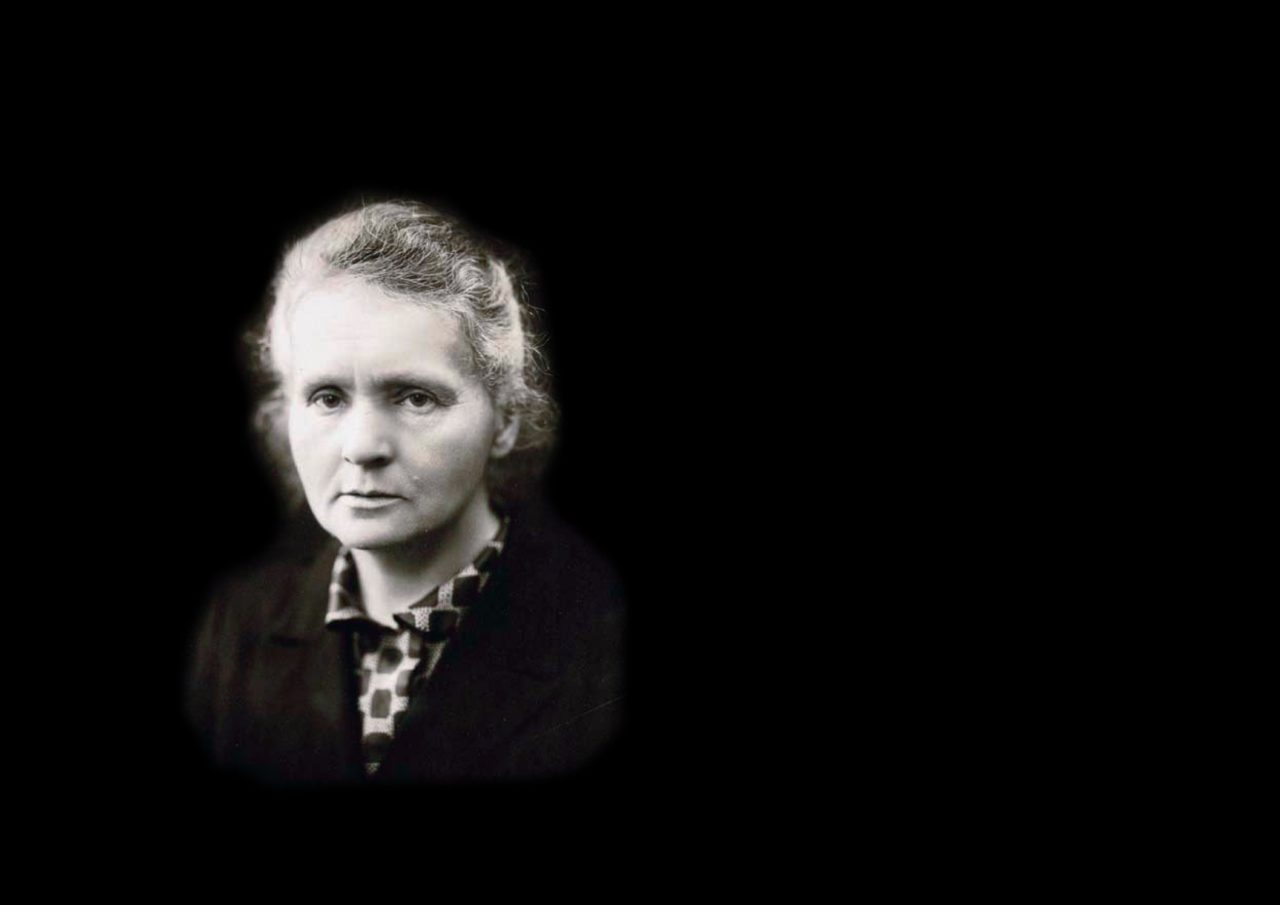
Portrett av Marie Curie med svart bakgrunn
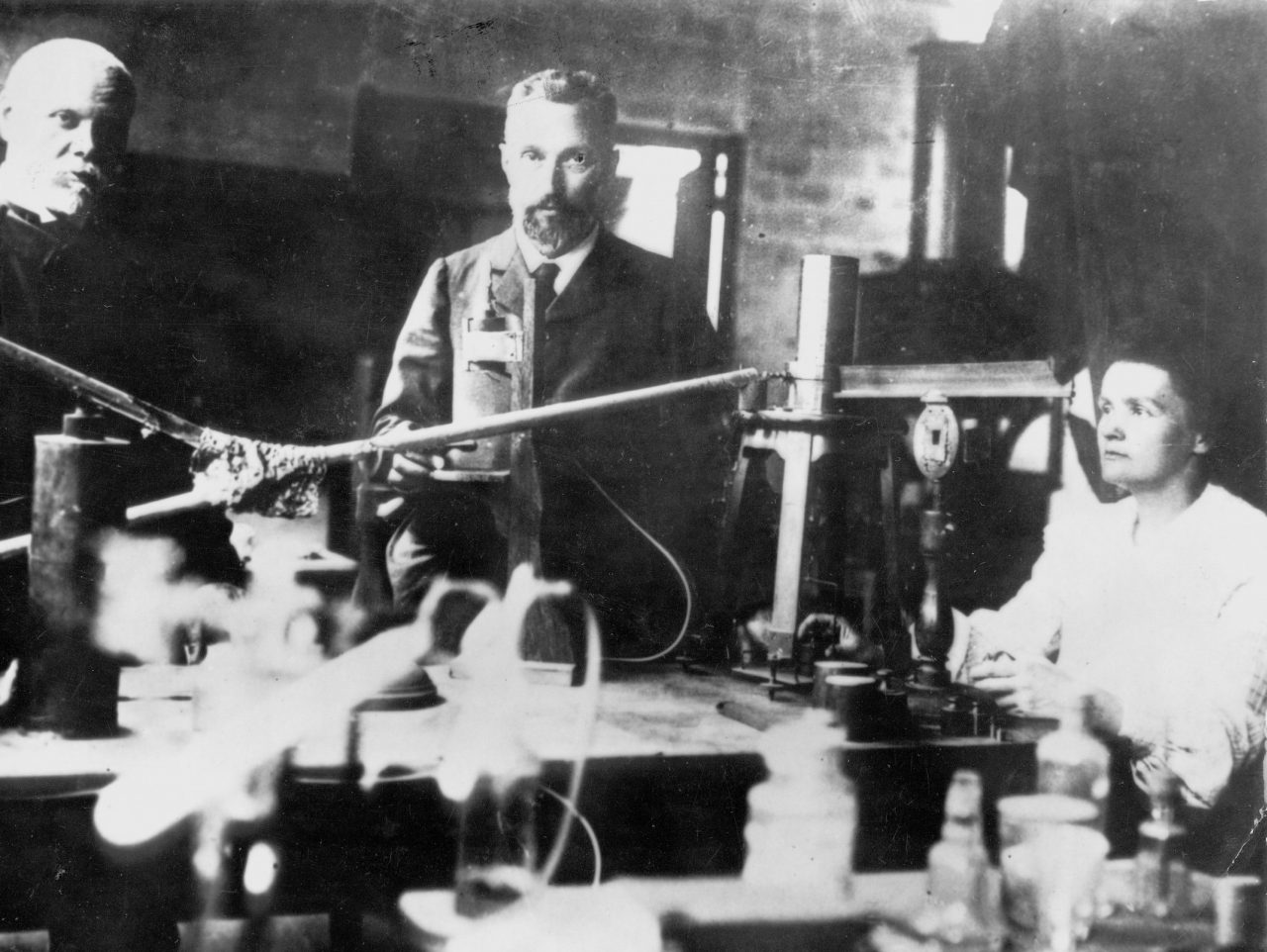
Marie og Pierre Curie
A magical element
Marie discovered the chemical element radium with its very unique qualities. She saw that radium sent rays from its atomic nucleus. This is called radioactivity. When this glowing element was new and exciting, it was used in everything from toothpaste to wristwatches.
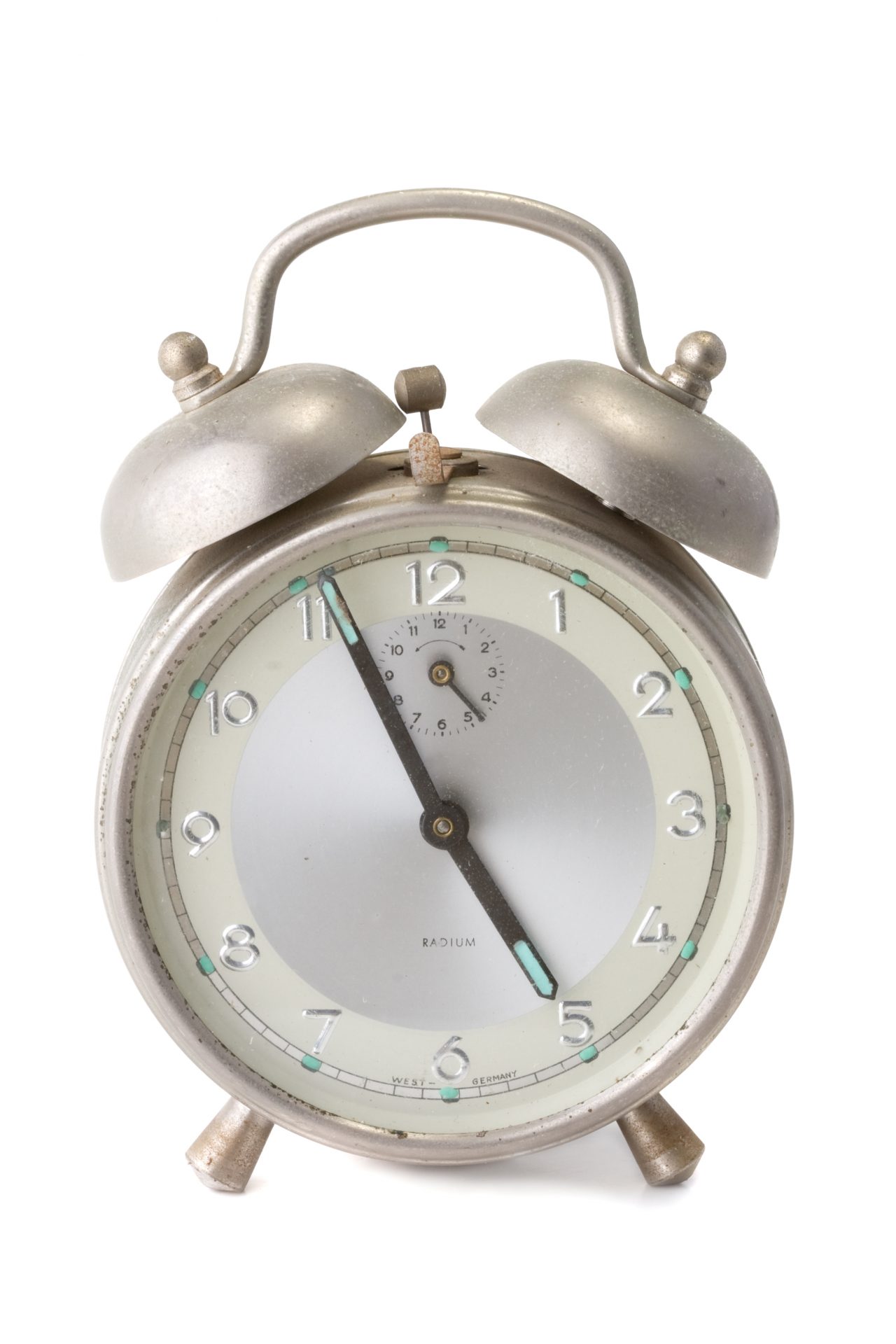
The usefulness of radium
These days, we know that radium radiation is dangerous for your health. But if it is used correctly, it can save lives. One example is in the treatment of cancer.
Marie created mobile x-ray laboratories using cars. These were then used on the front in World War I. The x-ray pictures taken by these machines could show internal injuries in wounded soldiers. Marie’s radium was used for this, and Marie herself even participated in the work.
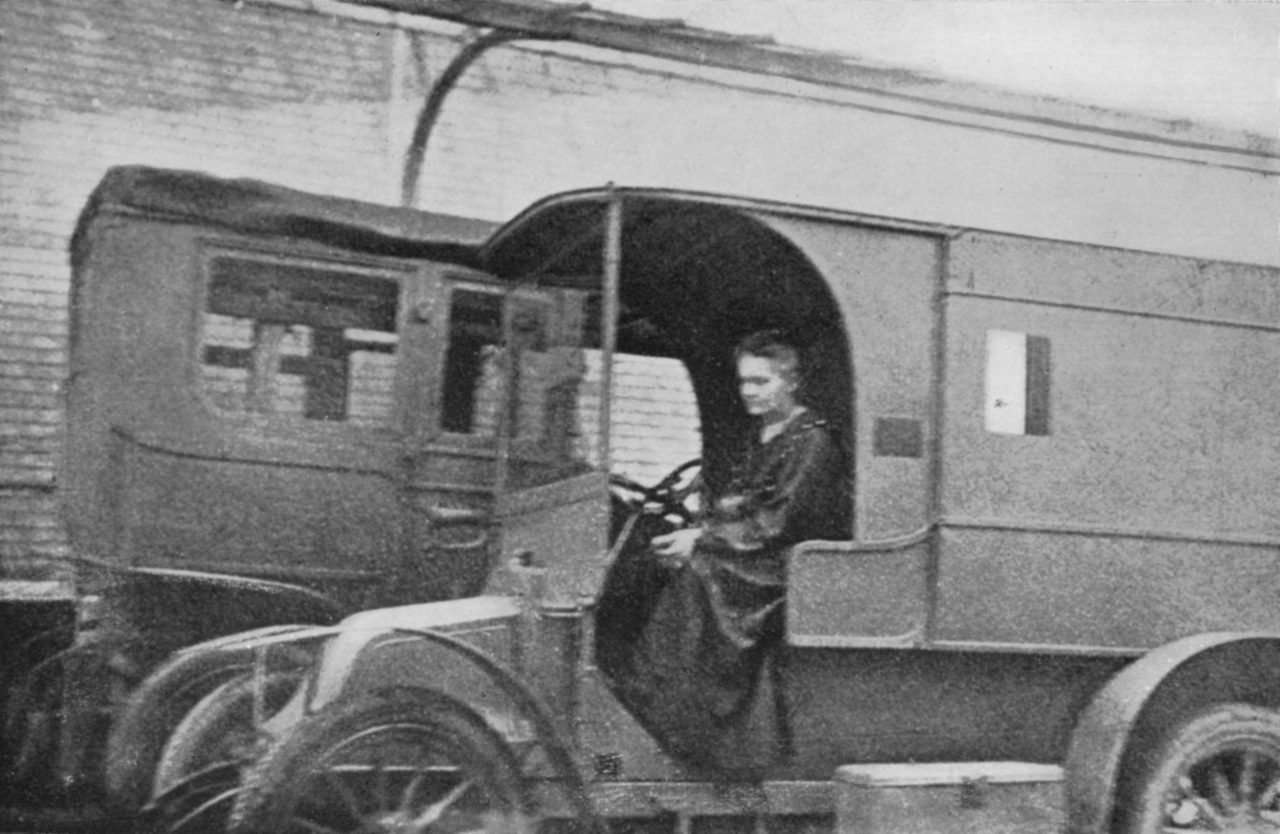
Marie Curie i en bil kalt røntgenlaboratorier på hjul
Personal issues
When Marie’s husband Pierre died in a traffic accident in 1906, Marie took over his job as a professor at the Sorbonne. Later on there was a scandal when it became known that she was having an affair with a married man,even though he had already separated from his wife. This kind of situation was not liked in the early 1900s, and Marie became sick by all the ugly rumors.
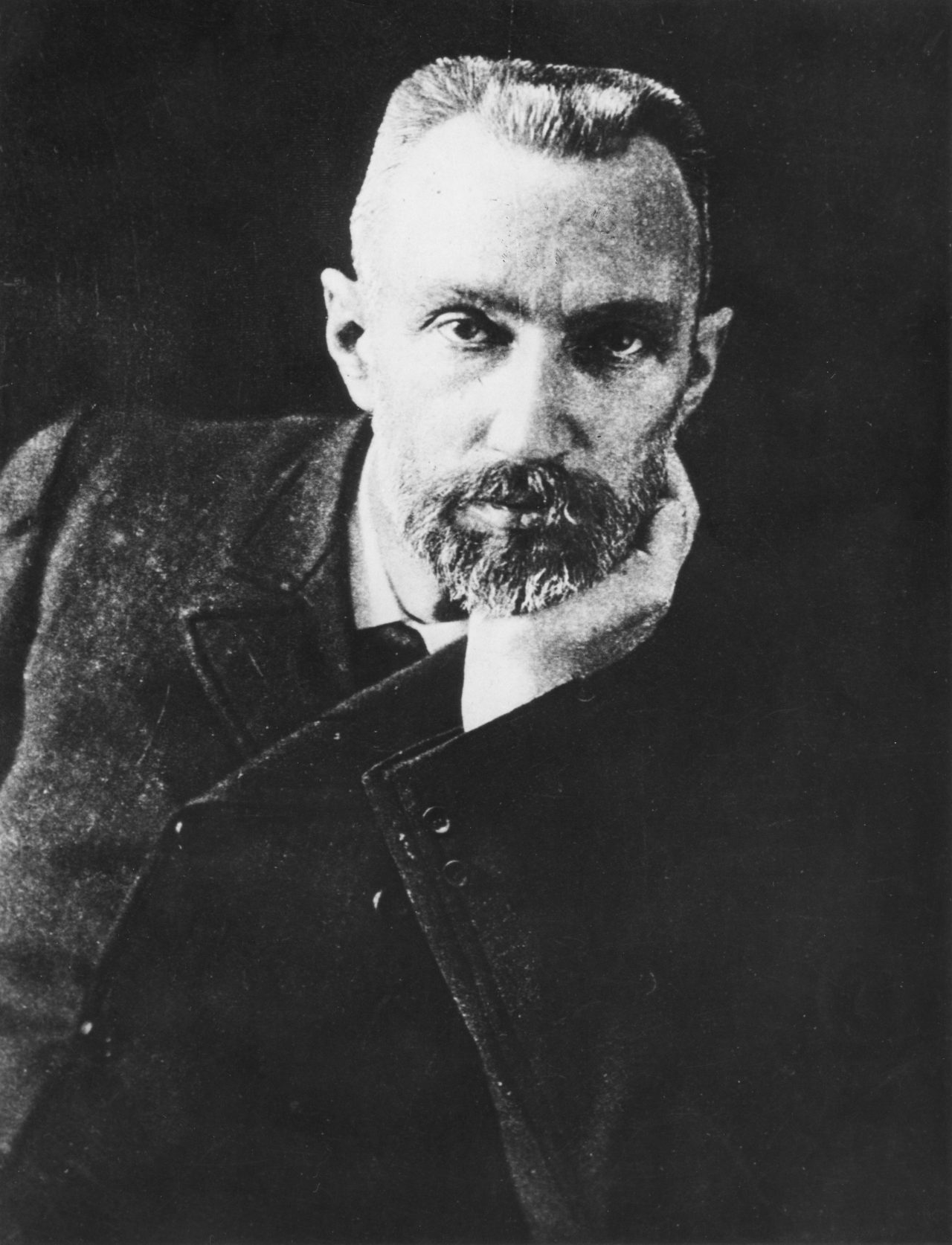
The greatest victim
Marie Curie became sick from all of the radiation she was exposed to from all of her work over the years. People did not know how dangerous radiation was back then. Marie Curie died of anemia when she was 67, most likely because of the radiation from her research on radium. You could say that she gave her life for her research.
Today, her notebooks must be kept in a box of lead because they were and still are highly radioactive.
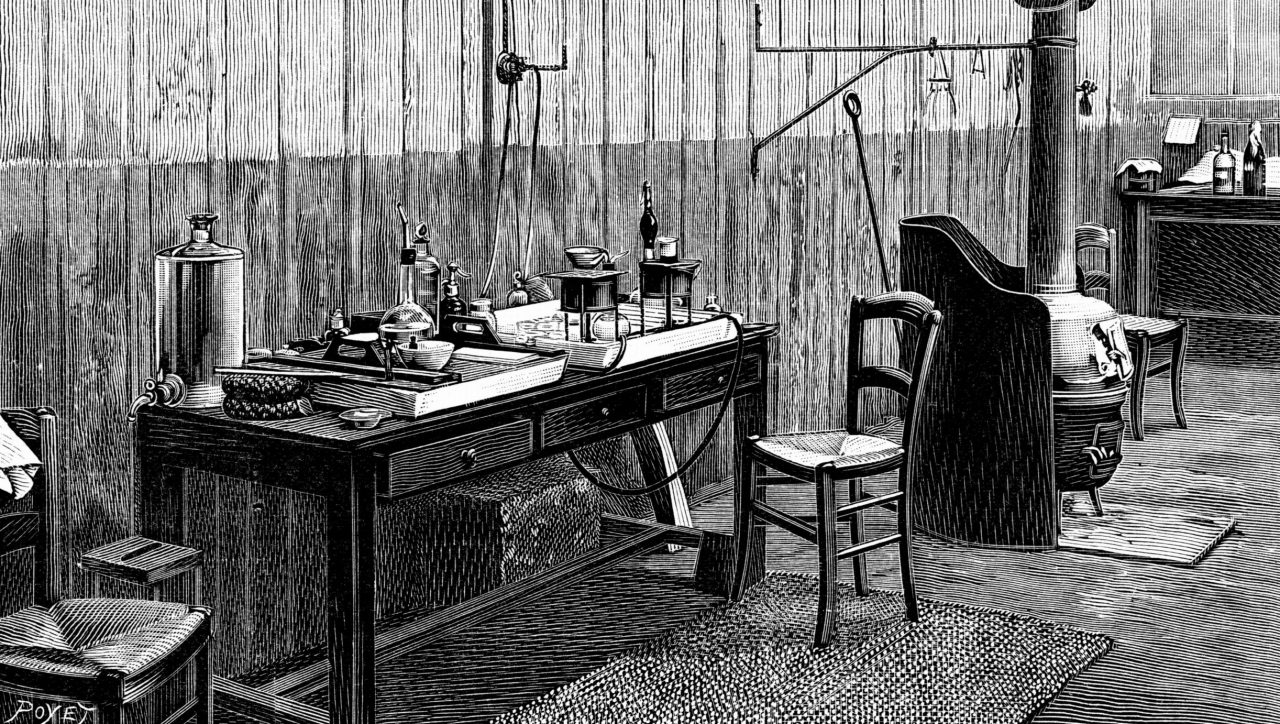
Illustrasjon av laboratorium til Marie og Pierre Curie
Marie Curie’s Legacy
Marie had two daughters. Irène followed in her mother’s footsteps, and in 1935 Irène and her husband Frédéric Joliot got the Nobel Prize in Chemistry. Her other daughter is Eve. She was a concert pianist, journalist, and author.
Marie Curie was a brave and groundbreaking woman who was passionately interested in research and communicating her knowledge to the world, so it would be of use to all.
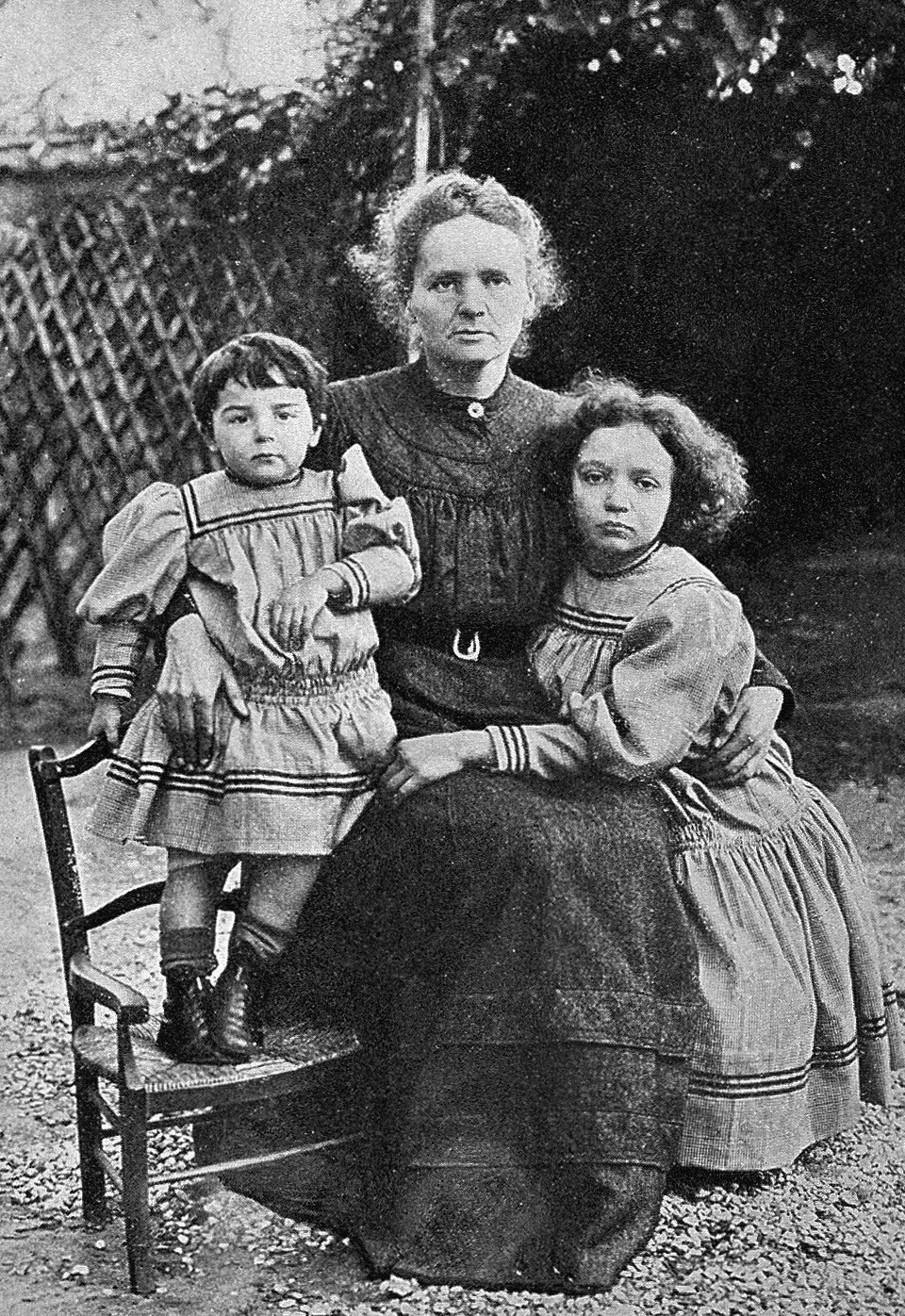
Sources:
- Historiens største kvinner (2019)
Orage forlag AS, 2019
- Pedersen, Bjørn: Marie Curie i Store norske leksikon på snl.no.
Hentet 4. januar 2021 fra https://snl.no/Marie_Curie
- New Scientist (24.10.2022): Marie Curiehttps://www.newscientist.com/people/marie-curie/
- NPR (24.10.2022): Don’t Come to Stockholm! Madame Curie’s Nobel Scandalhttps://www.npr.org/sections/krulwich/2010/12/14/132031977/don-t-come-to-stockholm-madame-curie-s-nobel-scandal
- Encyclopedia Britannica (24.10.2022): Marie Curie: Polish-born French physicisthttps://www.britannica.com/biography/Marie-Curie/Death-of-Pierre-and-second-Nobel-Prize
- The Nobel Prize (24.10.2022): Marie Curie: Biographicalhttps://www.nobelprize.org/prizes/physics/1903/marie-curie/biographical/
Media Rights:
-
-
Henri Manuel
-
Getty Images / TED-Ed – YouTube
-
Getty Images
-
Getty Images
-
Getty Images
-
Getty Images
-
Foto: Ukjent (CC BY 4.0)
-


